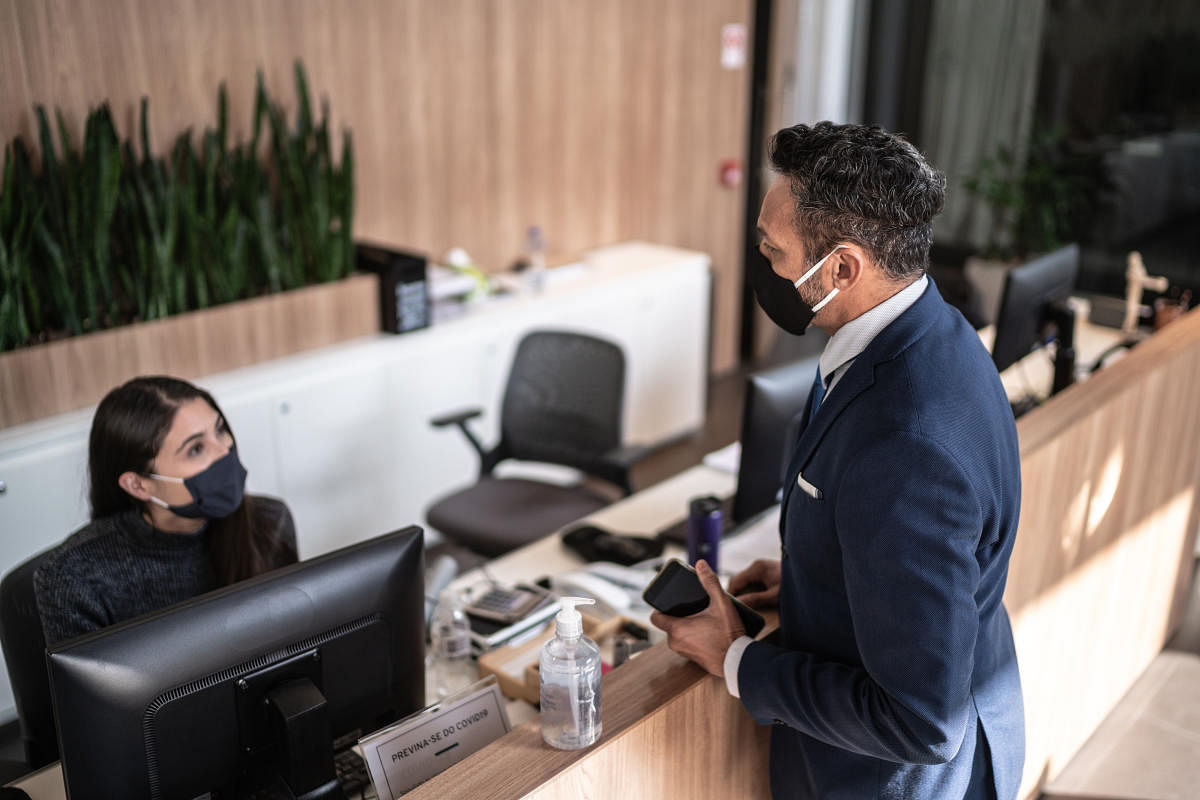
When a person sneezes or coughs, can they potentially transmit droplets carrying viruses like SARS-CoV-2 to others in their vicinity? Does talking to an infected person also carry an increased risk of infection? How do speech droplets or “aerosols” move in the air space between the people interacting?
Answering all these questions is a research team which has carried out computer simulations to analyse the movement of the speech aerosols.
The team includes researchers from the Department of Aerospace Engineering, the Indian Institute of Science (IISc), along with collaborators from the Nordic Institute for Theoretical Physics (NORDITA) in Stockholm and the International Centre for Theoretical Sciences (ICTS) in Bengaluru.
The team visualised scenarios in which two maskless people are standing two, four or six feet apart and talking to each other for about a minute, and then estimated the rate and extent of spread of the speech aerosols from one to another. Their simulations showed that the risk of getting infected was higher when one person acted as a passive listener and didn’t engage in a two-way conversation. Factors like the height difference between the people talking and the quantity of aerosols released from their mouths also appear to play an important role in viral transmission.
“Speaking is a complex activity … and when people speak, they’re not really conscious of whether this can constitute a means of virus transmission,” says Sourabh Diwan, Assistant Professor in the Department of Aerospace Engineering, and one of the corresponding authors.
In the early days of the Covid-19 pandemic, experts believed that the virus mostly spread symptomatically through coughing or sneezing. Soon, it became clear that asymptomatic transmission also leads to the spread of Covid-19. However, very few studies have looked at aerosol transport by speech as a possible mode of asymptomatic transmission, according to Diwan.
Interactions of speech jets during short conversations between two people separated by a distance of four feet, visualised by an iso-surface of the aerosol concentration. Three different height differences are shown. The blue and red colours represent the simulated speech jets emanating from the mouths of the two people. In the simulations, when the speakers were either of the same height, or of drastically different heights (one tall and another short), the risk of infection was found to be much lower than when the height difference was moderate – the variation looked like a bell curve.
Based on their results, the team suggests that just turning their heads away by about nine degrees from each other while still maintaining eye contact can reduce
the risk for the speakers considerably.